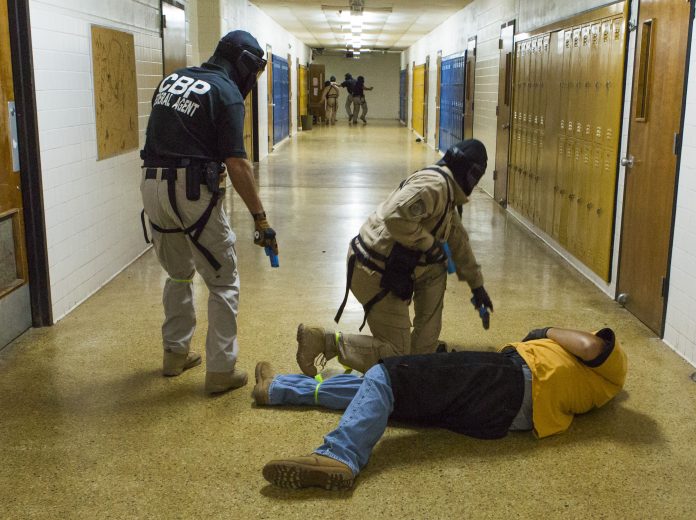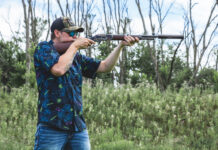
In my day job, I work with leaders in high risk industries to figure out how and why their systems and processes are going wrong and leading to negative outcomes, and how they can redesign said systems and processes to fix those identified problems. We consult in health care (patient safety, quality, and risk management), in transportation (accident avoidance, maintenance quality control), in gas and electric (employee safety, system reliability), in manufacturing (workplace safety, process improvement), and more. The reason we can work with such a wide variety of industries is that our reliability and risk management principles aren’t specific to any process or procedure, or even any desired outcome, but are universal concepts that can be applied to any problem, to help avoid any negative outcome of concern. In fact, one of my colleagues has demonstrated this universality to clients by building a model oriented around preventing the “negative outcome” of his son’s dog scratching his hardwood floors.
FRAMING THE PROBLEM
If you model any risk management problem as a line, beginning with the initiating action and ending with the negative outcome, there are essentially three potential places along that line you can attempt to intervene. First, you can try to prevent the initiating action itself. Second, you can try to put defenses in place between the initiating action and the negative outcome, so that even if the initiating action occurs it doesn’t cause a negative outcome. And third, you can accept that, despite your best efforts, sometimes the negative outcome will occur, and you can seek to mitigate the harm it causes. The best, most reliable systems will seek to do all three: they will include precursor strategies to reduce the likelihood of the initiating action, layered defensive strategies to stop or catch the initiating action before it can result in harm, and mitigation strategies to reduce the harm when a negative outcome does slip through the cracks. But in general terms, those are the three options available.
I’ve recently had several discussions on the topic of school shootings and other mass killer events, and it got me thinking of problem solving in the terms of these risk management principles. There are three types of strategies to solve the problem of active killer attacks.
PRECURSOR STRATEGIES
First, we can seek to prevent people from attempting such attacks in the first place. There are three elements that must align for this initiating action—someone planning and attempting an attack—to occur. Someone must want to conduct an attack. They must have access to the means to conduct an attack. And they must have the opportunity to conduct an attack. Without all three elements (the will, the means, and the opportunity), an attack cannot occur. Thus, strategies that seek to prevent the initiating action do not have to address all three elements, but rather must only strive to ensure the three do not align.
Potential strategies may include efforts to reduce the root causes of such violence through early identification and intervention: mental health reform, outreach efforts to disaffected youth and immigrants, etc. These attempt to reduce the likelihood someone will want to conduct an attack in the first place.
Other potential strategies may instead focus on preventing those who want to do harm from accessing the means to do so. Gun control efforts usually fall under this category, under the belief that if only we could control access to firearms better, people wouldn’t have the means to conduct such attacks.
The problem is that there’s no evidence that’s true–the UK and Australia have still experienced multiple mass killer attacks despite outright gun bans, and France and Belgium have had multiple mass killer attacks despite relatively strict gun control compared to the US. The third deadliest mass shooting in American history was conducted with two small caliber handguns, rather than scary “assault weapons.” In fact, of the 23 mass shootings in America since 1949 that have claimed at least ten lives, 9 of them (~40%) involved no rifles whatsoever, only handguns and shotguns.
Committed attackers will still conduct such attacks even without guns—the Nice attacker (who claimed more lives than any mass shooting in American history) used a truck, as did the recent New York City attacker; Chinese and British terrorists have killed dozens with knives; attackers in Belgium and Boston and France and elsewhere have used homemade explosives and other improvised weapons.
If someone is committed to attacking, gun control does not stop them, because there are simply too many different means to conduct an attack to prevent a committed attacker from getting access to them. No matter how good such efforts may be, they will never stop someone like the attacker in Las Vegas who had no identifiable motive and was clearly committed to his efforts—given his level of planning, if it weren’t a gun, he was just as likely to use something else. And more problematically, while removing or limiting access to guns or certain types of guns demonstrably does not effectively stop mass shootings and other mass killing attacks, what it DOES do is severely limit other strategies to mitigate the harm from such attacks, as we’ll discuss later.
All of that said, that does not mean there isn’t anything that can be done to limit access. Those clearly identified as potential attackers, generally through their personal histories of actual violence and/or violent mental health tendencies, can be denied easy access to the various means of attack, and this we already do. Legal firearms purchases in the United States (with the sole exception of in-person private transfers between residents of the same state) require background checks—this process manifestly has flaws, given the Texas church shooter who was a legally prohibited person given his domestic abuse conviction but still passed the background check due to a communication failure in reporting said conviction to the database. That’s certainly a potential area for improvement. Similarly, explosives and chemicals that can be easily made into explosives are generally tightly controlled, to inhibit access to those who would do harm with them. And so forth. But, to reiterate, this is a difficult point at which to intervene, because most strategies to do so will be very resource intensive and not terribly effective. There are just too many means to conduct a successful attack to prevent access to all of them. Ask the Brits.
The third necessary element is the opportunity to conduct an attack. This one is the most difficult to address. There is little realistic way to get rid of schools, or churches, or sporting events, or crowded parks, or any other public gathering that presents an opportunity for an attack.
As we can see, our ability to effectively intervene and prevent the initiating action is extremely limited by the nature of the problem, so we must not limit our efforts and focus all our resources to such strategies. Instead, we need to look and see where and how else we can reduce the risk of such events.
DEFENSIVE STRATEGIES
Because there is no way to prevent ALL such attacks, the next strategy is to put defenses in place between the attacker and his intended victims. The first opportunity to do so consists of early efforts to catch them in the planning stages (such as the multiple school shootings which have been foiled pre-attack by alert parents and citizens reporting concerns to the police, who investigated and stopped the attacker before he ever fired a shot). Such efforts can fail (and did in the Parkland shooter’s case, due to the FBI not following up on the report they received), but they’re a viable option in general. We want multiple layers of defense precisely because any one intervention strategy can and will sometimes fail.
Next, if we can’t prevent the attack before it starts, we can seek to stop it before it reaches its intended victims through robust security measures. In general, security for public sites and events in the United States is a joke, known among security and risk experts as “security theater.” Things like barely-trained, underpaid, and unarmed staffers waving metal detecting wands over torsos and glancing into purses does absolutely nothing to stop a committed attacker, but it makes the ignorant feel better and more secure for a relatively low cost. Even the TSA fails on most every test of their process. If we instead want real security, it requires a legitimate investment of time, money, and resources.
There is, of course, a tradeoff that often makes good security less of a viable plan: no one wants to feel like they’re living or working or watching sports in a prison. But there are ways to achieve reliable security that will stop most attackers from reaching their targets without being oppressive; we can learn quite a bit from Israeli airport and high threat site security practices, for example. At schools, simple things like reinforced doors and windows, and actually locking them to ensure only one easily monitored entry point, can dramatically reduce an attacker’s ability to reach his target. Armed security at the door, if well done, can keep the attacker outside and away from the vulnerable target—see the incident in Garland, Texas.
But even the best systems sometimes fail. What happens when an individual with the will, the means, and the opportunity to conduct an attack manages to avoid early detection and gets past our security measures and other defenses?
MITIGATION STRATEGIES
Sometimes the shooter gets to the target. Whether that’s a school, a mall, a church, or a sporting event, there are just too many opportunities to secure them all. So in anticipation of such events, we need to seek to minimize the harm when an active killer reaches his intended victims. And, quite frankly, statistically the best way to limit deaths and injuries in active killer incidents is to confront the attacker with armed resistance. Greg Ellifritz over at Active Response Training has spent decades studying this very issue, and in his words,
“Statistically, the absolute best way to survive an active shooter event is not by running, hiding, or fighting with chairs and fire extinguishers. The best survival results for everyone involved occur when an armed citizen or police officer kills the active shooter…Active killers have historically stopped their attack as soon as they have been met with EFFECTIVE resistance. Although many folks have effectively resisted while unarmed, the most effective way to target an armed killer is to use a firearm. [There have been] numerous incidents when armed citizens have stopped active killers…In each of these cases, the armed citizen was not harmed by the killer. Also, in each [case] the killer stopped his rampage without shooting another round as soon as he was confronted by the armed citizen. Having an uninjured citizen responder combined with no further casualties among the killer’s intended victim pool is the best possible outcome during a mass murder event. That rarely happens unless the courageous resisting citizen is carrying a firearm.”
There are multiple ways to achieve this goal, of confronting the active killer with effective armed resistance at the earliest opportunity. One is to rely on the police. However, police are rarely on site at the start of the shooting (and even when they are they cannot be relied upon as the only option—see the inaction of the Sheriff’s Deputies at Parkland for a reminder of why it’s better to have more than one option). As of 2012, the average number of deaths in active shooter events when the shooter was stopped by law enforcement was 14. When the shooter was stopped by armed civilians, that number dropped to 2.5. The difference isn’t because armed civilians are better at stopping shooters. It’s because they’re faster, because they’re already there to confront the shooter with effective resistance, while the average police response time to an active shooter event is three minutes—longer than the time most shooters spend actually shooting. Thus, to best mitigate active shooters and keep casualties as low as possible, a viable and effective strategy is to ensure there is a rapid armed response on site, ready to confront the shooter.
Given the relatively high cost of armed security beyond a single School Resource Officer, one much more affordable option for schools would be to allow qualified, trained teachers and staff to carry concealed weapons (voluntarily, not mandatorily) as part of a school active shooter response plan. Having teachers as auxiliary armed first responders who can protect their student bodies, even if only a handful of volunteers in any given school, means not having to wait three or more minutes for the police to arrive, and thus means fewer deaths and injuries.
This, by the way, is the other downside to gun control efforts that I mentioned earlier. Beyond their inherent ineffectiveness at solving the “initiating action” problem, such laws and regulations also greatly limit the single best proven mitigation strategy to end a mass shooting with the fewest number of casualties, by disarming those who could otherwise respond and forcing victims to rely on the police response to end the shooting. Even beyond mass shootings, estimates of lawful defensive gun uses in the United States range between 100,000 and 2.5 million events every year—people do effectively use guns to defend themselves from attackers every day. Even those scary so-called “assault weapons” have a legitimate defensive purpose, as many expert defensive firearms trainers will readily state that a rifle is a far better choice for defending against home invaders than a handgun—a much more common occurrence than the still extremely rare mass shooting events that make the news. Taking away that proven personal mitigation strategy in the name of reducing a committed attacker’s access to only one of many different potential means of conducting a successful attack makes no sense from a risk management perspective—it’s cutting off your nose to spite your face.
All of that said, using teachers to supplement response plans isn’t limited to using them as armed auxiliaries. A very easy strategy to implement, that wouldn’t cost very much money, would be to ensure every teacher and school staffer is trained in immediate trauma casualty care, and there is a basic trauma kit in every classroom with a tourniquet, a compression bandage, gauze, medical tape, and chest seals. We already teach CPR. The American College of Surgeons’ “Stop the Bleed” campaign recommends that basic first aid training be supplemented with bleeding control training for trauma (and they offer Bleeding Control certifications), because rapidly controlling hemorrhagic bleeding can keep victims alive long enough for them to be treated and saved at the hospital. This has the added benefit that it doesn’t just apply to active shooter events–the same training can apply for any traumatic injury, regardless of the cause. We will reduce casualties if the teachers and staff know how to keep the victims alive until the ambulances can arrive.
PUTTING IT ALL TOGETHER
Like I said before, the best risk management systems implement strategies in all three areas: seeking to prevent the initiating action, adding layers of defense between the action and the outcome, and mitigating the harm associated with the outcome when it occurs. There is no reason our approach to school shootings and other active shooter events should not follow the same principles. We absolutely should seek to prevent attacks in the first place, sure. But we can’t prevent them all, so we also need to defend against them reaching their intended victims as much as possible, and mitigate the harm when those efforts are unsuccessful.



